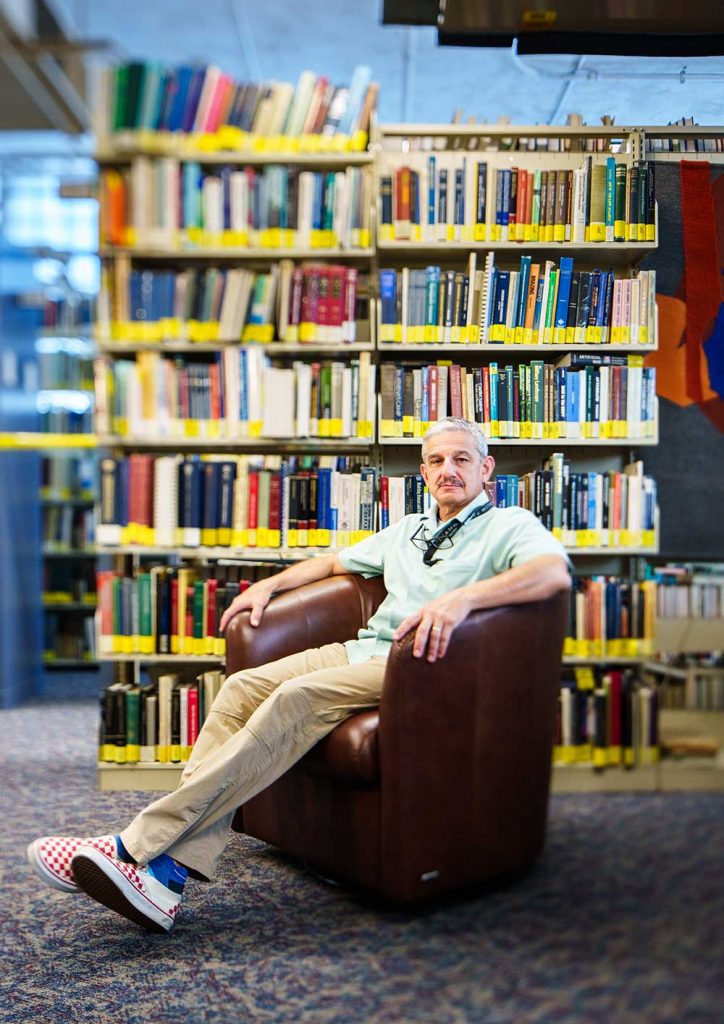Practitioner of openness shows it can work

Sandia mathematician Richard B. Lehoucq once received bad reviews for falling asleep in class. Now, he’s one of 26 fellows inducted in 2024 by the Society for Industrial and Applied Mathematics. The honor recognizes his significant contributions to the field.
“SIAM Fellows form a crucial group of individuals helping to advance the fields of applied mathematics, computational science and data science,” the society stated.
Rich’s journey from disengaged student to curious and open-minded scholar is evident in his willingness to explore both new math and unfamiliar cultures and ideas. For example, during a conference in China, his colleagues were amused by his willingness to try a range of exotic Chinese dishes — an enthusiasm for learning that he brings to every aspect of his life.
“I expect to learn from this interview too,” Rich said as the conversation shifted to his mathematical contributions. His work spans the field, from nonlocal modeling, to numerical linear algebra and software, continuum mechanics, the applications of probability to optimization and high-dimensional data analysis.
“All these fields have edges or borders, which creative mathematicians like me work to extend to make better tools,” he said. “Since that process affects engineers working with actual material, there’s a lot to consider.
“It’s not so easy to explain,” he added. “Localized modeling assumes all forces act through a surface, which makes it difficult for engineers to model fractures.” A nonlocal model uses integral equations instead of differential equations, but engineers not used to this new approach can be dubious.
“People have deadlines,” he said. “You can’t force change. The consequences of a new approach are daunting. You have to rewrite models that have taken over 20 or more years to write. You are, in a sense, saying that’s no longer relevant. Change happens when fairly moderate changes lead to significant improvement.”
A career shaped by mentorship
Rich has spent 27 years at Sandia refining his ideas. He credits his arrival at Sandia to the late Richard Hansen and his wife Karen Haskell, who discovered him working at a software development company in Houston. Despite making a good salary, he was bored.
Impressed by the quality of Rich’s work as a subcontractor, the couple strongly suggested he return to graduate school at Rice University for his Ph.D. Hansen pleaded Rich’s case with the admissions committee, supporting his candidacy. His support helped Rich get a tuition waiver and a research assistantship.
“I grew up in modest circumstances, so I didn’t mind being poor,” Rich said. His parents, immigrants from Colombia, spoke Spanish to him the first five years of his life and, pursuing employment, moved with him to various U.S. locations.
Asked whether frequently switching social structures as a child may have prepared his mind to move comfortably among different systems of mathematics, he responded, “I never thought of that. It’s possible.
“Early on, having to navigate culturally distinct situations in my formative years — Virginia, Pennsylvania and more — allowed me to be not scared about trying different things.”
His unexpected career turn to Rice introduced him to his wife of 30 years, offered the opportunity to earn a doctorate in computational science and engineering in 1995, and led to a Wilkinson postdoctoral fellowship at Argonne National Lab, equivalent to Sandia’s Truman fellowship. Two years later, he arrived at Sandia.
At Sandia, Rich has published more than 75 papers, co-authored a book, given plenary presentations at international conferences, served as an associate editor for several journals, organized workshops and served on organizing committees for conferences.
Rich appreciates the certainty that mathematics provides. “I love being able to express complex mathematical ideas in a simple, clean and neat way, much like writing something well,” he said.
When it comes to research, Rich offers two key pieces of advice: “Strip away details to uncover the core idea” and “Listen to different groups that have experiences you don’t have; it equips you with valuable tools.
“I wasn’t a good K-12 student and don’t do well on standardized tests. But I have resilience. And I’m flattered that colleagues half my age are willing to collaborate with me.”